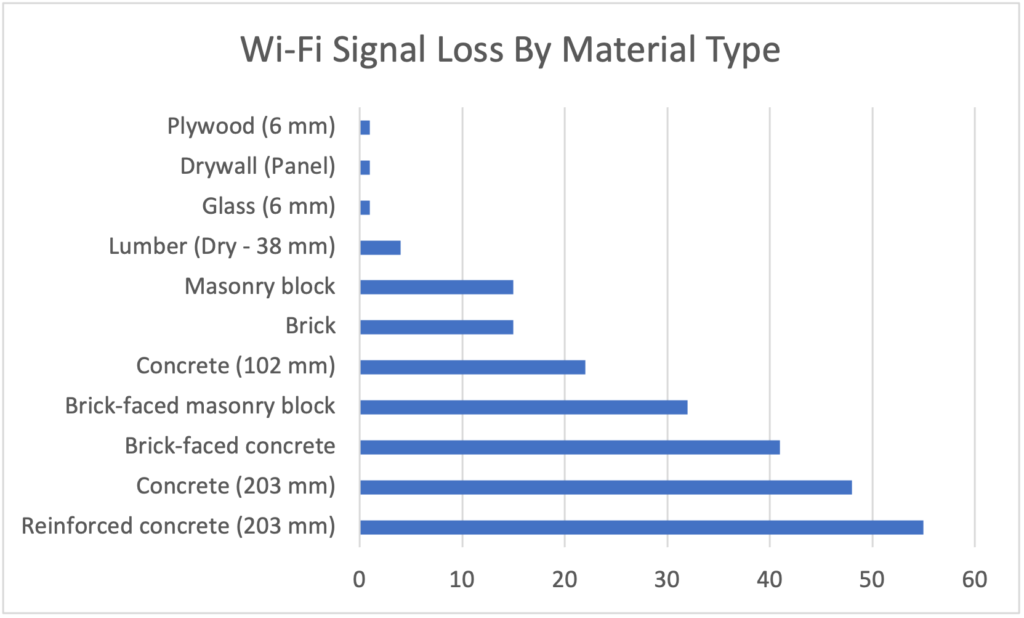Have you ever been stumped trying to figure what wall attenuation value to simulate in your predictive RF designs? Have you wondered if reinforced concrete is “thicker” then a wall constructed with masonry bricks? The chart below summarizes relative attenuation values from common building materials as tested by NIST way back in 1997.

Shockingly, concrete yields the greatest signal attenuation both with and without reinforcement as compared against the other tested materials. Apparently, NIST did not have an elevator shaft wall handy on testing day. According to this data, plywood and drywall (panel) have almost zero (well, less than 1dB) effect on signal loss.
The following table shows dB loss values based on findings from extensive experiments performed and documented by NIST in a 1997 report called “Electromagnetic Signal Attenuation in Construction Materials”.
| Material | dB Loss at 2.437 GHz(Channel 6) | dB Loss at 5 GHz (Channel 36) | dB Loss at 6.515 GHz(Channel 113) |
| Reinforced concrete (203 mm) | 31 | 55 | 63 |
| Concrete (203 mm) | 29 | 48 | 54 |
| Brick-faced concrete | 18 | 41 | 48 |
| Brick-faced masonry block | 10 | 32 | 43 |
| Concrete (102 mm) | 15 | 22 | 25 |
| Brick | 6 | 15 | 15 |
| Masonry block | 11 | 15 | 16 |
| Lumber (Dry – 38 mm)) | 3 | 4 | 4 |
| Glass (6 mm) | 1 | 1 | 1 |
| Drywall (Panel) | ~1 | ~1 | ~1 |
| Plywood (6 mm) | ~1 | ~1 | ~1 |
Of course, there are other much simpler ways to measure wall attenuation values. Read this blog for a quick and easy way to measure wall attenuation with a popular professional Wi-Fi design and survey tool.
Slàinte!
References
Stone, W. (1997), Electromagnetic Signal Attenuation in Construction Materials, NIST Interagency/Internal Report (NISTIR), National Institute of Standards and Technology, Gaithersburg, MD, [online], https://doi.org/10.6028/NIST.IR.6055 (Accessed November 22, 2021)
Building Materials and Propagation (Final Report) 2014 – Ofcom
Modeling of Propagation Losses in Common Residential and Commercial Building Walls